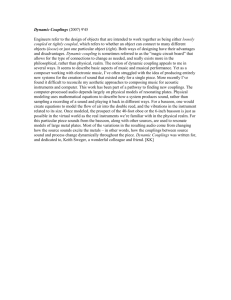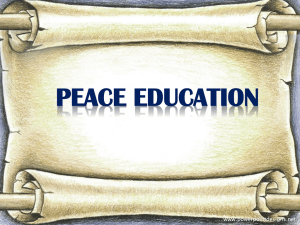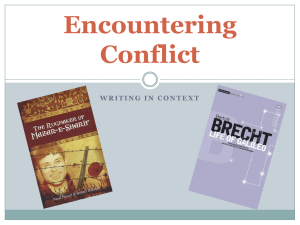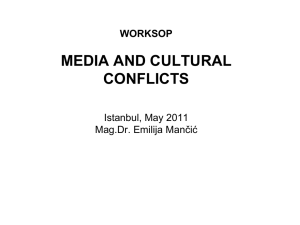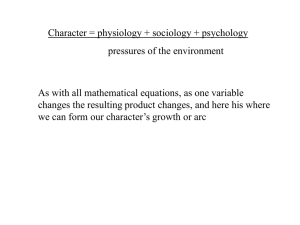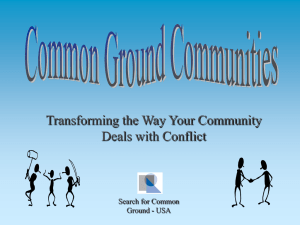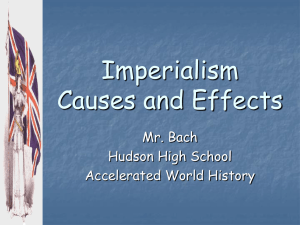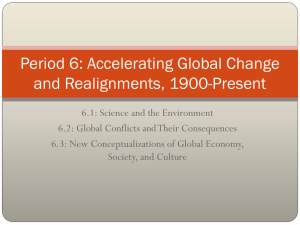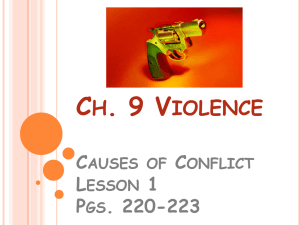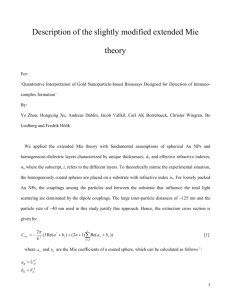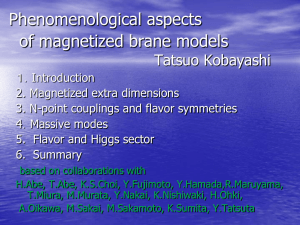What are Natural Resource conflicts?
advertisement
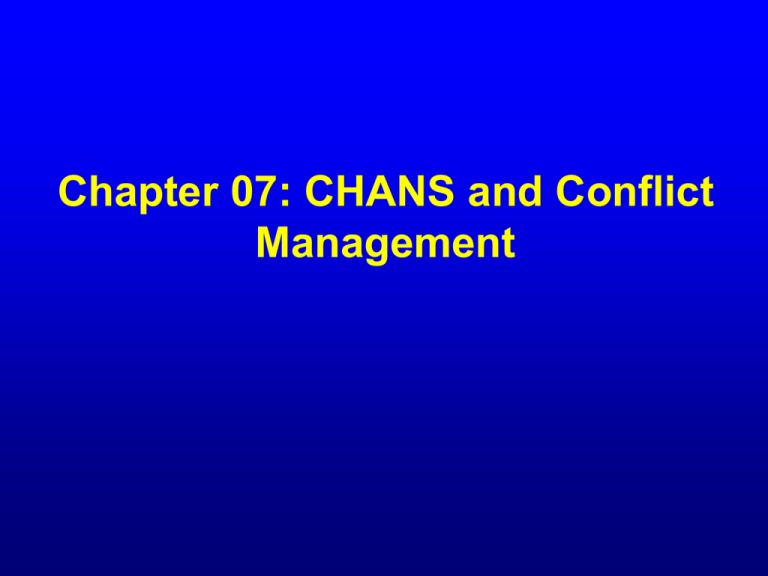
Chapter 07: CHANS and Conflict Management DISCUSSION TODAY • Coupled Human and Natural Systems (CHANS) • Conflict and INRM • Co-management Questions • What kind of relationships are there between Human and Nature? 1) Conquering 2) Succumbing to 3) Reliance 4) Coupling 5) Conflict • …… 1. Coupled Human and Natural Systems (CHANS) 1.1 What is CHANS? • Coupled Human and Natural Systems (CHANS) are systems in which human and natural components interact. • The science of CHANS builds on but moves beyond previous work (e.g., human ecology, ecological anthropology, environmental geography) 1.2 Major Characteristics of Couplings • Organizational Couplings -i.e. among organizational levels • Spatial Couplings -i.e. across space • Temporal Couplings -i.e. over time 1.2.1 Organizational Couplings • Reciprocal effects and feedbacks (Fig. 1) • Indirect effects • Emergent properties -e.g. nonlinearity and surprises (Fig. a/b) • Vulnerability • Thresholds and resilience (Fig. 2) b a 1.2.2 Spatial Couplings • Couplings across spatial scales (Fig. 3) • Couplings beyond boundaries • Heterogeneity (Fig. 4) 1.2.3 Temporal Couplings • Massive increases in human impacts on natural systems (Fig. 5) • Rising natural impacts on humans • Legacy effects and time lags • Increased scales and pace • Escalating indirect effects 1.3 Challenges and Opportunities • Linking coupled human and natural systems across scales • Integrated tools • Comparative studies and portfolios • Collaborations among all fields relevant to coupled human and natural systems 2. Conflict and International Natural Resource Management Content: • What are Natural Resource conflicts? • Key Conflict Management Strategies • The Conflict Management Programmes 2.1 What are natural resource conflicts? • Natural resource conflicts are disagreements and disputes over access to, and control and use of, natural resources. 2.2 The Challenge • • • • Multiple stakeholders Diverse interests Democratisation and decentralization Need and opportunity for communities to participate in sustainable resource management 2.3 Sources of Conflict • Exclusion of user groups • Contradictions between local and introduced management systems • Misunderstandings and lack of information about policy and objectives 2.3 Sources of Conflict • Contradictions or lack of clarity in laws and policies • Inequity in resource distribution • Poor policy and programme implementation 2.4 How do conflicts manifest themselves? • The form and intensity of conflicts vary widely by place, and over time within any community. • Conflicts manifest themselves in many ways, ranging from breaking rules to acts of sabotage and violence. 2.5 The Consequences of Conflict Conflict, if not addressed can: • escalate into violence • cause environmental degradation • disrupt projects • undermine livelihoods 2.6 Conflicts can remain hidden or latent • People may allow problems to continue because of fear, distrust, peer pressure, financial constraints, exclusion from certain conflict resolution procedures, or for strategic reasons. 2.7 Who are the different actors? • • • • • • • Men and Women Neighbouring communities, villages Community-based organizations Businesses Governments Development agencies NGOs 2.8 Key Conflict Management & Resolution Strategies • Avoidance -Acting in ways to keep conflict from becoming publicly acknowledged. • Coercion -Threatening or using force to impose one’s will. 2.8 Key Conflict Management & Resolution Strategies • Negotiation -Following a voluntary process in which parties reach agreement through consensus. • Mediation -Using a third party to facilitate the negotiation process (a mediator lacks the authority to impose a solution). 2.8 Key Conflict Management & Resolution Strategies • Arbitration -Submitting a conflict to a mutually agreeable third party, who renders a decision. • Adjudication -Relying on a judge or administrator to make a binding decision. 2.9 Reasons Why Conflict May Arise • Policies imposed without participation • Lack of harmony and co-ordination between bodies of law and legal procedures • Poor identification of and inadequate consultation with stakeholders • Uncoordinated planning 2.9 Reasons Why Conflict May Arise • Inadequate or poor information sharing • Limited institutional capacity • Inadequate monitoring and evaluation programmes • Lack of effective mechanisms for conflict management 2.10 Approaches to NRCMR • Customary Systems • National Legal Systems • Alternative Conflict Management 2.11 What is Needed? • Addressing conflict is a prerequisite for sustainable natural resource management • If not addressed, conflicts can affect community livelihoods and result in resource degradation • Alternative conflict management offers an innovative, multidisciplinary approach to managing conflicts Remember... • Natural resource management is conflict management 3. Co-Management as a Response to Conflict What is Co-Management? • Joint decision-making • Local political claims to the right to share resource management power and responsibility with the state • Power-sharing in the exercise of resource management between a government agency and a community or organization of stakeholders CHANS!? No Conflict!? Next Topic: Climate Change (Please read some documents/papers) Thank you!
